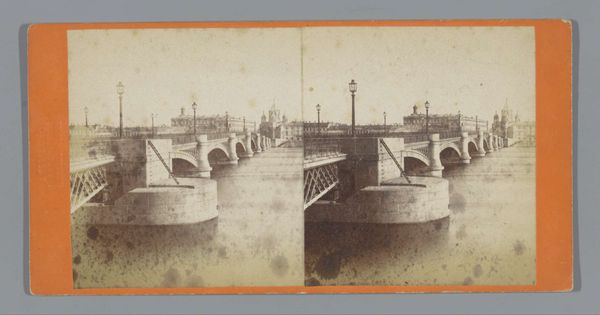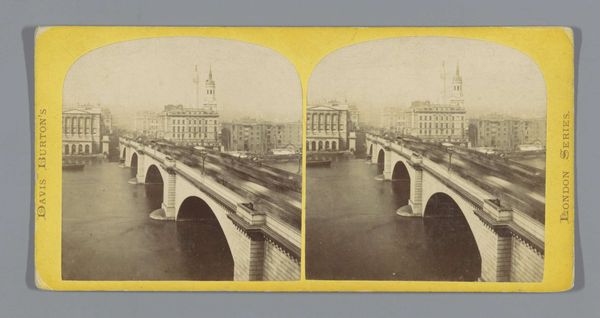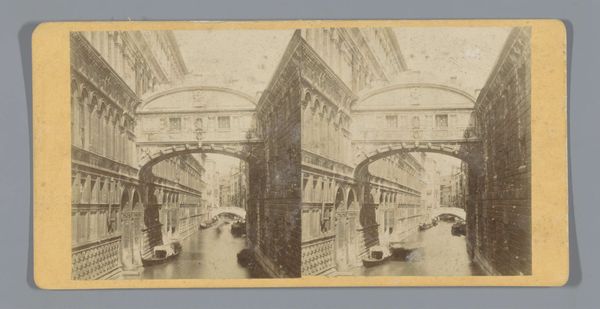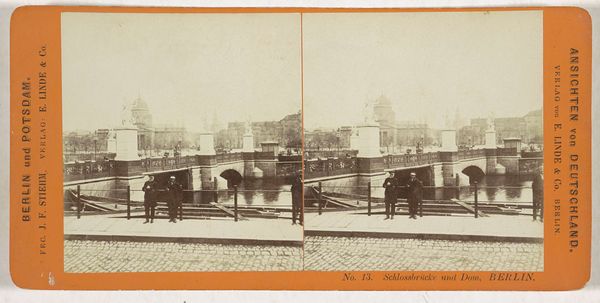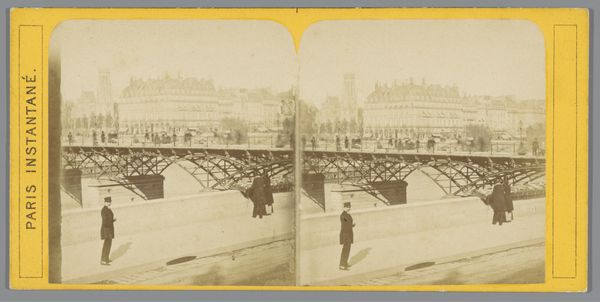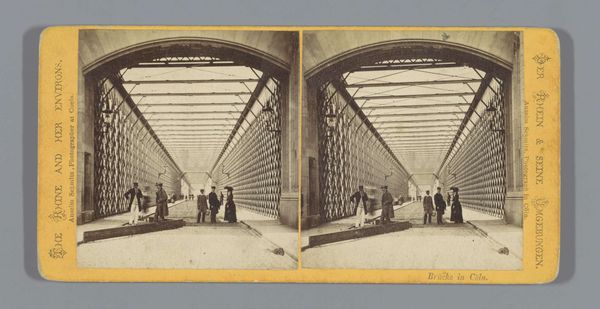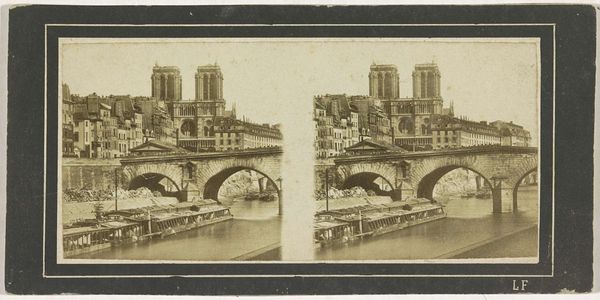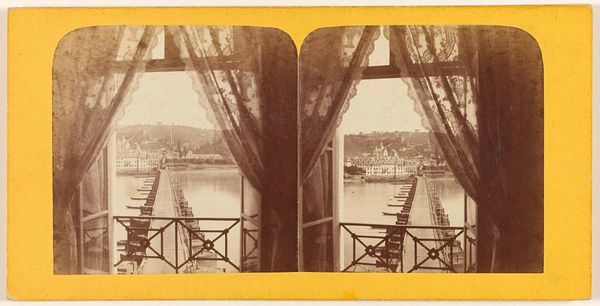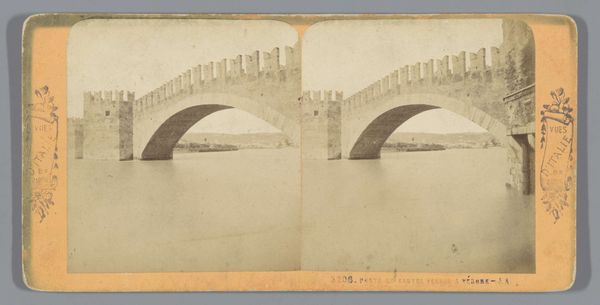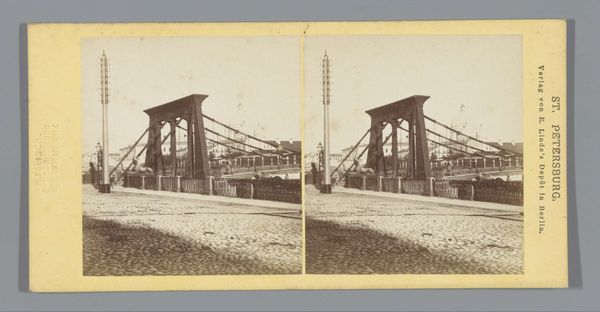
stereo, photography
#
16_19th-century
#
stereo
#
landscape
#
photography
#
cityscape
Dimensions: height 86 mm, width 177 mm
Copyright: Rijks Museum: Open Domain
Editor: This stereo photograph from somewhere between 1860 and 1865 by Hippolyte Jouvin, titled 'Haven van Frankfurt am Main in Duitsland, gezien onder een brug' — which translates to 'Harbour of Frankfurt am Main in Germany, seen under a bridge'—shows a fascinating view of the city's harbor. The composition, framed by the arch of a bridge, creates an interesting perspective. I'm curious, how do you interpret this work beyond its purely documentary function? Curator: The image provides a peek into the rapidly changing urban landscape of mid-19th century Europe, particularly Germany. Photography, still in its relative infancy, becomes a tool not only for documentation but also for shaping perceptions of progress. Consider how the bridge itself – a symbol of industrial advancement – literally frames the bustling harbor. It makes me wonder about the societal implications, and whether this progress benefitted all inhabitants equally. How does Jouvin, by choosing this vantage point, comment on the power structures emerging in Frankfurt at the time? Editor: That's a powerful point. I hadn’t considered how the bridge, usually a connection, acts almost like a barrier or filter here. The figures underneath it almost seem obscured, or marginalized. Do you think the choice of stereo photography—that is, this image made from two photographs meant to be viewed as one—enhances that feeling of being separated or somehow distanced from the scene? Curator: Precisely! The stereo format adds depth, but also a layer of artificiality, a constructed reality. We are given the illusion of being present, yet we are always outside, observing. We might then ask: Whose reality is being constructed, and for whom? The rising middle class who celebrated industrial progress? What voices or experiences are marginalized, and can we tease out whispers of resistance from the shadows? Editor: This has completely shifted my understanding. What initially seemed like a straightforward landscape is laden with socio-political undertones! I'll definitely be thinking more critically about perspective and representation in photography moving forward. Thanks for shedding light on that. Curator: And I am left contemplating the way we frame the past, and whose stories we prioritize within those frames. The art challenges us to always question those choices.
Comments
No comments
Be the first to comment and join the conversation on the ultimate creative platform.
